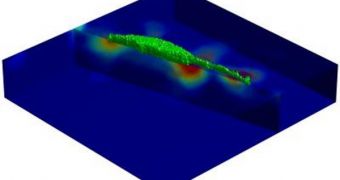Molecular biologists and other researchers have been looking into the mechanisms cells in the human body use to move around for a long time, but it would appear that, following each study, the mystery deepens. For example, researchers at the Brown University have recently found that the cells tend to prod their surroundings with hand-shaped appendages and various chemicals, in order to decide which way to turn. While this allows us to live longer, healthier lives and promotes regeneration, it also puts bioengineers in the dark.
The experts are currently engaged in efforts of constructing various types of tissues and implants, including heart valves and artificial skin, all of them based on stem cells, or engineered from scratch. Their main concern is that they will be able to construct these advanced implants, but that the devices will not be accepted by the human body, precisely because they do not exhibit the same level of mobility as regular cells, and also because they do not employ the same moving patterns.
In an attempt to clear this mystery once and for all, researchers have recently conducted a new set of investigations into how cells move, but with a twist. Instead of employing conventional imaging methods, which look at cells in two dimensions, they used a 3D technique, so that they could surprise all nuances the movements exhibited. The BU team collaborated with colleagues from the California Institute of Technology (Caltech) for these investigations.
“We've learned that cells move in much more complex ways than previously believed. Now, we can start to really put numbers on how much cells push and pull on their environment and how much cells stick to tissues as they move around and interact,” BU Assistant Professor of Engineering Christian Franck says. The expert is also the co-lead author of a new paper detailing the findings, which appears in the latest online issue of the respected journal Proceedings of the National Academy of Sciences (PNAS).
The US National Science Foundation (NSF)-funded work revealed completely new, different motions with the new observation method. “The motion itself is in three dimensions,” Franck explains. The team now plans to use force-measurement methods to examine the difference in moving patterns that exists between healthy and sick cells in the body. “That promises to give us greater insight in how cells' behavior changes when they become diseased,” he concludes.

 14 DAY TRIAL //
14 DAY TRIAL //